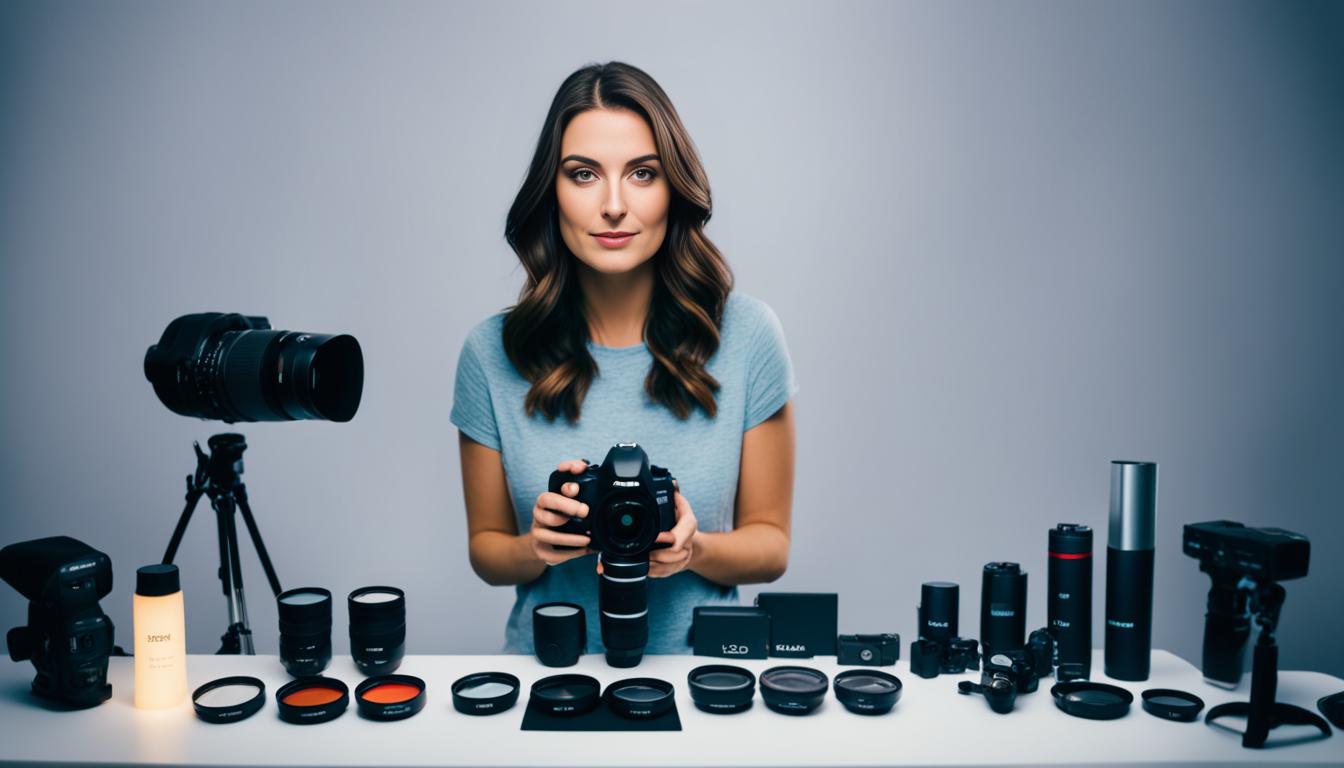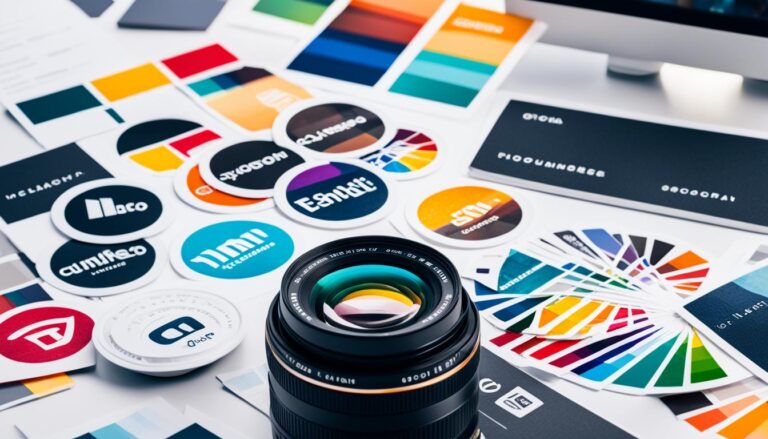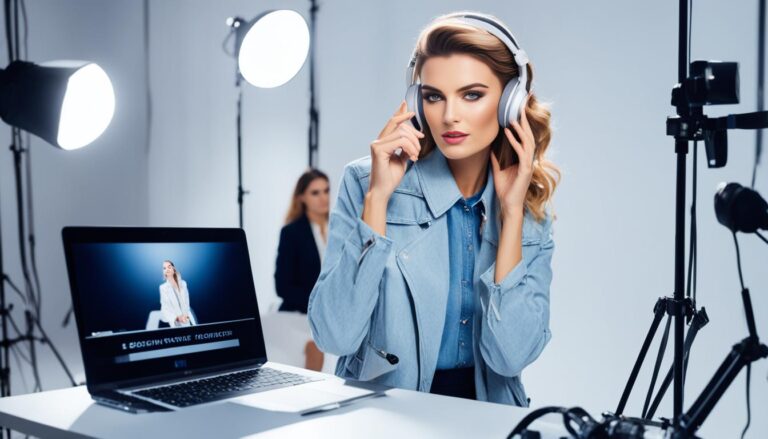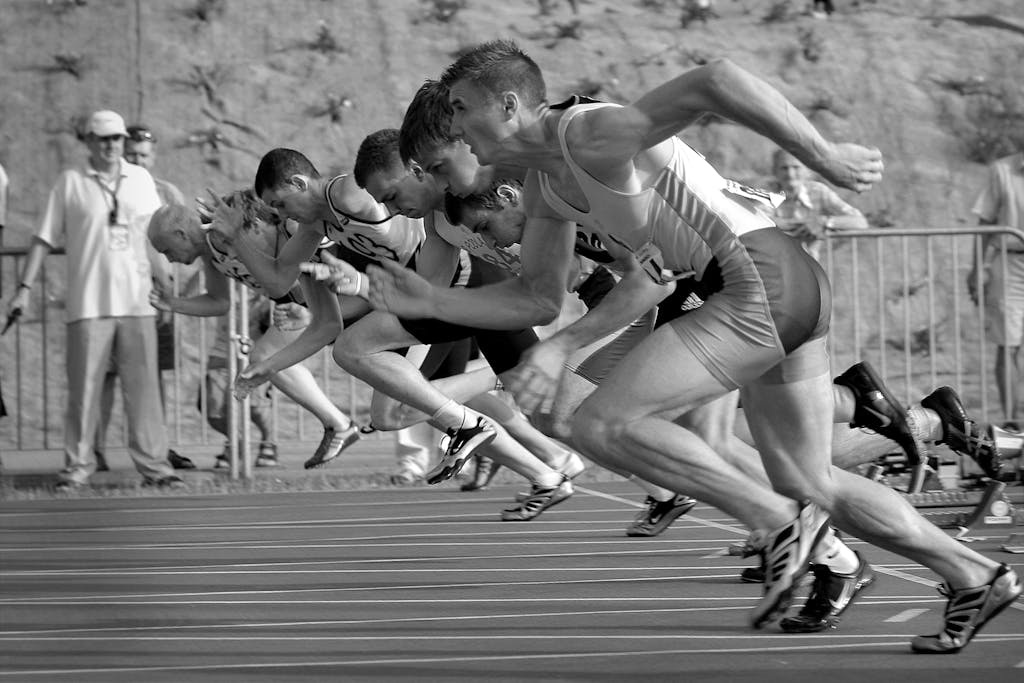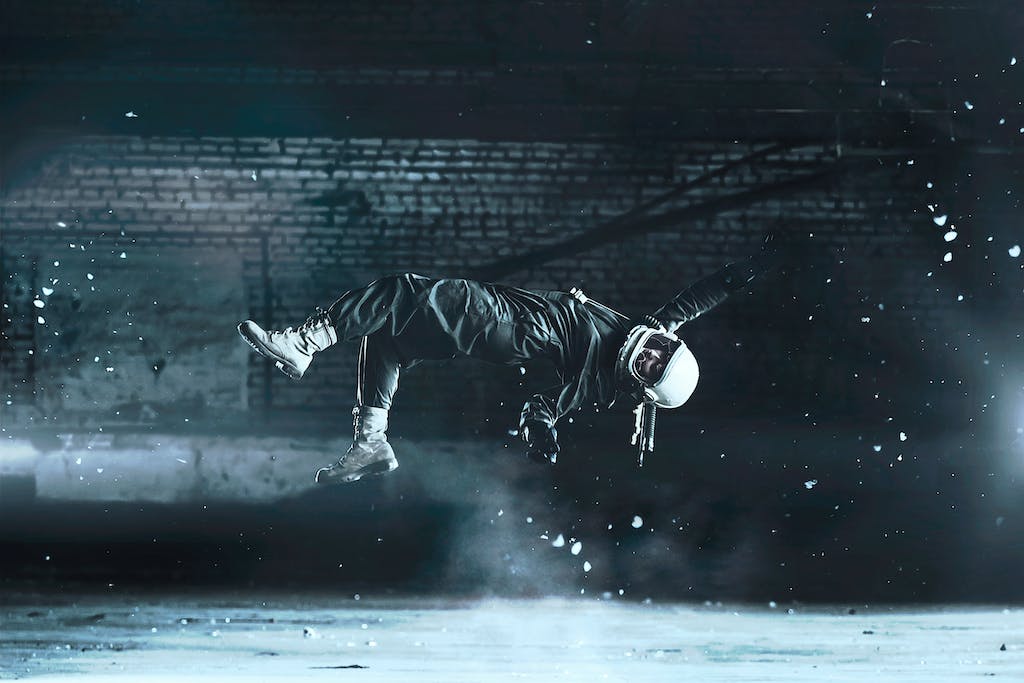How to Become a Product Photographer
Have you ever held a camera, capturing moments that seem to freeze time? Have you felt the rush of excitement as you take the perfect shot, the one that makes your heart skip a beat? I know that feeling all too well. My name is Emma, and I am a professional product photographer. Photography has always been my passion; turning it into a thriving photography business as a product photographer has been my dream.
There is something truly magical about the art of product photography. It goes beyond simply taking pictures; mastering the interplay between light, composition, and the product. It is about telling a visual story that captivates and entices. And in a world where visual content is king, being a professional product photographer opens up endless opportunities.
Whether you dream of capturing high-end fashion, mouthwatering food, or innovative tech gadgets, becoming a product photographer requires dedication, skill, and a discerning eye. In this article, I will take you through the essential steps to embark on your journey as a successful product photographer. From understanding the role of a product photographer to mastering the art of lighting, we will explore every aspect of this captivating profession.
Key Takeaways:
- Becoming a product photographer offers endless opportunities to tell visual stories and capture the essence of products.
- Dedication, skill, and a discerning eye are essential for product photography success.
- Understanding the role of a product photographer and mastering lighting techniques are crucial steps in the journey.
- Investing in the right equipment and continuously honing your craft are essential for professional growth.
- Building a strong portfolio and gaining practical experience is key to establishing yourself in the industry.
Understanding the Role of a Product Photographer
Product photographers play a crucial role in capturing high-quality images of products for various purposes, such as advertising and e-commerce. They possess unique skills that combine creativity and technical proficiency to produce visually appealing and accurate representations of products.
The Essentials of Product Photography
To excel in product photography, photographers must have a keen eye for detail and a deep understanding of lighting, composition, and product styling. By mastering these essentials, they can create captivating product images that effectively communicate the features and benefits of the photographed products.

Variety and Challenges in Product Photography Careers
Product photographers can work with various products, including jewellery, fashion, food, and electronics. Each product category presents its own unique set of challenges and opportunities for creativity. This variety allows photographers to specialize in specific genres or explore different industries, expanding their portfolio and honing their craft.
Mastering the Art of Lighting in Product Photography
Lighting is crucial in product photography, significantly impacting the final image. Understanding the characteristics of light and how to manipulate it is essential for creating the desired mood and emphasizing product details.
Introduction to Light and Its Impact on Product Shots
How light interacts with a product can dramatically change its appearance and feel. It determines how colours are rendered, cast shadows, and highlighted textures. By mastering the art of lighting, product photographers can manipulate these elements to create visually stunning images that effectively showcase a product’s features and appeal to potential customers.
Light can be used to bring out the intricate details of a product, create a sense of depth and dimension, and evoke specific emotions, ultimately influencing a consumer’s buying decision.
Two primary light sources are commonly used in product photography: natural light and studio lighting setups.
Natural Light vs. Studio Lighting: Pros and Cons
Natural light provides a soft and organic look to product photographs. It is readily available and often preferred for its natural colour rendition. Photographers can manipulate natural light to achieve the desired effect by utilising diffusers and reflectors.
On the other hand, studio lighting setups offer more control and versatility. They allow photographers to shape the light to their specifications, ensuring consistent lighting across various product shots. With studio lights, it is possible to create dynamic lighting setups, highlighting specific areas of the product and eliminating unwanted shadows.
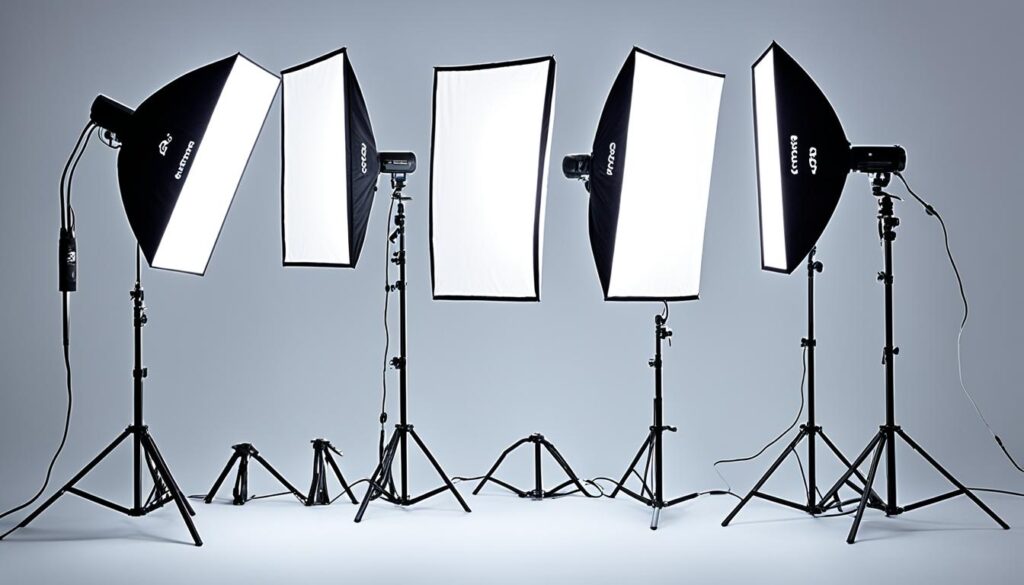
Reflectors and lightboxes are commonly used accessories in product photography to enhance and modify lighting. Reflectors bounce light onto the product, reducing shadows and adding highlights, while lightboxes soften and diffuse the light to create a uniform and pleasing illumination.
Whether choosing natural or studio lighting, mastering the art of lighting in product photography is crucial for creating high-quality and compelling images that effectively showcase the product’s features and appeal to potential buyers.
Essential Equipment for Aspiring Product Photographers
As an aspiring product photographer, investing in the right equipment is important to achieve professional results. Choosing the right camera and lenses is crucial to capturing sharp, high-resolution product images. I recommend using a DSLR camera for its flexibility and superior image quality. Combined with the right lenses, it allows you to precisely capture product details.
One essential lens for product photography is the macro lens. This specialized lens is ideal for capturing small details and achieving a shallow depth of field, adding artistic elements to your product shots. With a macro lens, you can showcase the intricacies of the products you photograph, highlighting their unique features.
In addition to the camera and lenses, a tripod is an indispensable tool for product photography. It helps keep the camera steady, resulting in sharp and focused images. The tripod also allows for precise adjustments, enabling you to achieve the desired composition and angle for your product shots. When shooting product photography, stability is key, and a tripod provides the necessary support to ensure consistent image quality.

Other essential equipment for product photographers includes reflectors, light boxes, and photo editing software. Reflectors help manipulate and enhance the lighting in your product shots, while lightboxes provide a controlled environment for capturing consistent and well-lit images. Photo editing software allows you to enhance and refine your product photographs during post-production, ensuring your images meet the highest standards.
Advancing Your Skills with Professional Accessories
Once you have the essential equipment, you can enhance your product photography skills with professional accessories. These accessories include shooting tables, plinths and risers, light boxes, and studio lights. They help create a controlled environment, creating more creative possibilities in product shoots. Investing in professional accessories can elevate your photography business and help you deliver high-quality product images that meet clients’ expectations.

Professional accessories are essential tools for achieving professional results in your product photography. They provide improved control over lighting, composition, and product styling, allowing you to create stunning visuals that effectively showcase the products you photograph.
A shooting table is a versatile accessory that lets you capture products from different angles and perspectives. It provides a stable platform for placing your products and helps keep them steady during the shoot. With a shooting table, you can easily achieve consistent and precise product shots, enhancing the overall quality of your images.
Plinths and risers are useful accessories for adding depth and dimension to your product photographs. They can elevate the products, creating interesting angles and highlighting specific details. Plinths and risers come in various materials and sizes, allowing you to customize the look and feel of each product shoot.
Lightboxes are another valuable accessory that helps diffuse and control lighting. They provide a soft and even illumination, minimizing shadows and reflections on your products. Lightboxes are particularly useful when photographing small and shiny objects, as they help eliminate unwanted glare and create a clean and professional look.
Studio lights are essential for professional product photography. They offer a more powerful and controllable lighting source compared to natural light. With studio lights, you can manipulate and shape the light to create the desired mood and highlight the key features of your products. Studio lights provide consistent and reliable lighting solutions from product shoots in a dedicated studio to on-location shoots.
Investing in professional accessories is a worthwhile investment for any product photographer. They enhance the quality of your work and showcase your commitment to delivering high-quality product images. With the right accessories, you can elevate your photography business and attract more clients seeking professional and visually compelling product photography.
Product photography is a competitive field, and having professional accessories gives you an edge over others by allowing you to bring your creative ideas to life. Whether you’re shooting for e-commerce, advertising, or other purposes, professional accessories help you capture product images that stand out, engaging customers and driving sales.
Crafting the Perfect Product Photography Portfolio
A well-curated and professional product photography portfolio is crucial for attracting potential clients and showcasing your skills. To create an impressive portfolio, shoot mock product photos to demonstrate your abilities and showcase the range of products you can photograph. Selecting your best work that accurately represents your photography skills and style is important. Building an online or dedicated portfolio website is essential for easily sharing your work with potential clients and establishing yourself as a successful product photographer.
Shooting Mock Photos to Demonstrate Your Abilities
One effective way to create a compelling product photography portfolio is by shooting mock product photos. By doing so, you can demonstrate your abilities to potential clients and showcase your versatility in capturing different types of products. Focus on creating high-quality and visually appealing images that highlight the unique features of each product. Experiment with different lighting setups, composition techniques, and product styling to showcase your creativity and attention to detail.
Selecting Your Best Work to Showcase
When curating your product photography portfolio, it’s essential to carefully select your best work. Choose images that demonstrate your technical skills, artistic vision, and ability to capture the essence of the products you photograph. Consider the diversity of the products, such as different sizes, textures, and colours, to showcase the breadth of your photography skills. Aim for a cohesive collection of images that complement each other and tell a story about your capabilities as a product photographer.
It’s also important to consider the preferences and interests of your target audience. Tailor your portfolio to appeal to the specific industries or sectors you wish to work with. For example, if you specialize in food photography, include mouth-watering images that showcase your ability to capture delicious and enticing food products.
Remember, your portfolio represents your skills and style, so be selective and only include your best work. Quality is more important than quantity, and showcasing a strong body of work will leave a lasting impression on potential clients.

How to Become a Product Photographer Through Practical Experience
Gaining practical experience is essential for those aspiring to become successful product photographers. It allows you to apply your skills in real-world scenarios, refine your techniques, and build a solid portfolio. There are several ways to gain practical experience:
Gaining Experience Through Discounted or Pro Bono Work
Offering discounted or pro bono work is a great way to gain experience while building your portfolio. By providing your services at a discounted rate or even for free, you can attract clients who may not have been able to afford professional product photography otherwise. It also allows you to work on different types of products, further expanding your skills and versatility.

The Value of On-The-Job Learning
On-the-job learning is invaluable in the field of product photography. By working alongside experienced professionals, you can learn from their expertise, observe their techniques, and gain insights into the specific requirements and expectations of the industry. Whether assisting a seasoned photographer or working as part of a photography team, on-the-job learning provides unique opportunities for growth and development.
Taking the First Steps into Product Photography
If you’re starting out in product photography, it’s important to take the first steps to establish yourself in the field. Here are some key tips to get you started:
- Practice your photography skills: Spend time honing your photography skills by experimenting with different lighting setups, compositions, and product styling. The more you practice, the better you’ll capture stunning product images.
- Research and learn about product photography techniques: Familiarize yourself with the various techniques used in product photography, such as shooting with a white background, creating product collages, or capturing lifestyle shots. Understanding these techniques will give you a solid foundation to work from.
- Build a portfolio of product images: Start building a portfolio to showcase your skills and attract potential clients. Include a variety of products to demonstrate your versatility as a product photographer.
Remember, the secret to success in product photography is to keep learning, experimenting, and refining your skills. Don’t be afraid to think outside the box and try new approaches to capture unique and captivating product images.
With a strong foundation and understanding of product photography, you’ll be well on your way to becoming a successful product photographer and starting a thriving product photography business.
The Commercial Aspect: Understanding Product Photography Pricing
As a product photographer, understanding the commercial aspect of your craft is essential for running a successful photography business. One key aspect of this is pricing your product photos effectively. This involves considering factors such as the quality of your work, the time spent on each project, and the level of expertise required.
Setting Competitive Rates for Your Product Photos
When setting rates for your product photos, it’s important to balance offering competitive prices and ensuring your work is valued appropriately. Here are some factors to consider when determining your rates:
- The quality of your work: If you consistently deliver high-quality product photos that meet or exceed client expectations, you can justify charging higher rates.
- The time spent on each project: Consider how much time and effort you invest in each product photography project. Factor in the shooting time, editing, and post-production work to ensure your rates reflect the value of your time.
- The expertise required: If you have specialized skills or offer unique services, you can justify charging higher rates. Clients often seek out experienced product photographers who can deliver exceptional results.
Incorporating Costs and Pricing Models
When setting your rates, it’s important to consider the costs associated with product photography. These costs may include equipment, props, and post-production work. Incorporating these costs into your pricing ensures your business remains profitable and sustainable.
Additionally, there are different pricing models you can consider:
- Hourly rates: Charging an hourly rate allows you to account for the time spent on each project. This can be beneficial when working on projects that vary in complexity and length.
- Flat rates: Charging a flat rate for a specific product photography package or service can simplify the pricing process for you and your clients. It provides clarity upfront and lets clients easily budget for their product photography needs.
- Per photo rates: Some photographers charge per photo, especially when working on projects requiring many product images. This allows clients to pay for what they need without additional expenses.
Ultimately, the pricing models you choose should align with your preferred approach and the specific requirements of each project. It’s important to communicate your rates clearly to clients and emphasize the value they will receive in return.
By understanding the commercial aspect of product photography pricing, you can confidently set competitive rates, incorporate costs effectively, and build a successful photography business that meets your client’s needs.

Building a Home Studio for Product Photography
Building a home studio is a cost-effective solution for product photographers, allowing for a dedicated space to shoot product images. A home studio requires essential equipment, such as studio lighting, background setup, and props. Creating a suitable shooting space with a proper lighting setup is crucial for achieving professional-looking product photographs. With the right equipment and setup, you can effectively shoot product photography in the comfort of your own home.
One of the key components of a home studio is studio lighting. Proper lighting can significantly affect the quality of your product photos. Invest in studio lights that provide a consistent and adjustable light source to highlight the details of the products.
In addition to lighting, a background is essential for product photography. Choose a clean, neutral-coloured backdrop that complements the products and creates a professional look. This will help create a consistent and cohesive visual aesthetic across all your product shots.
Props are another element that can enhance your product photography setup. Depending on the products you shoot, consider using props that add context and enhance the overall appeal of the images. These props can be anything from lifestyle elements to complementary items highlighting the product’s features.
When setting up your home studio, consider the shooting space available. It should be spacious enough to accommodate your products and equipment comfortably. Clear any clutter and ensure a clean and organized environment to create a professional atmosphere.
Finally, be mindful of the lighting setup in your home studio. Experiment with different lighting techniques, such as using diffusers or reflectors, to achieve the desired effect. Continuously evaluate and adjust your lighting setup to maximize the quality of your product photographs.
Expanding Your Craft: Shooting Different Types of Products
As a product photographer, it’s important to expand your craft by shooting different types of products. This allows you to develop your skills and become a versatile product photographer. Each product category has unique challenges and requires specific techniques to capture the best images. By exploring different genres of product photography, you can broaden your portfolio and attract a wider range of clients.
When shooting different types of products, it’s important to understand each genre’s specific requirements and characteristics. Here are some popular product photography genres:
- 1. Fashion: Capturing clothing and accessories requires attention to detail, proper styling, and the ability to showcase the texture and fit of the products.
- 2. Food: Food photography creates appetizing images highlighting the colours, textures, and details of various dishes and ingredients.
- 3. Jewelry: Jewelry photography requires precision and the ability to capture the sparkle and intricate details of precious stones and metals.
- 4. Electronics: Capturing electronic devices involves showcasing their features, functionality, and sleek design visually appealingly.
- 5. Home decor: Home decor photography highlights the aesthetics and functionality of furniture, decorative items, and interior design elements.
When shooting different types of products, you may need to adjust your lighting setup, backgrounds, and composition techniques to suit the specific genre. Experimenting with different product photography techniques, such as capturing macro shots, utilizing creative angles, and incorporating props, can help you create unique and compelling images.
Being a versatile product photographer expands your creative skills and opens up opportunities for collaboration with diverse clients. Whether it’s capturing fashion accessories, mouthwatering dishes, or cutting-edge gadgets, the ability to adapt and excel in different product photography genres can help establish you as a sought-after and successful product photographer.
Continuous Education and Skill Development
Continuous education and skill development are essential for staying ahead in the competitive field of product photography. As technology and industry trends evolve, photographers must keep learning and upgrading their skills to offer the best services to clients. By pursuing online courses and workshops, photographers can enhance their craft, learn new techniques, and stay updated with the latest trends in product photography.
Online Courses and Workshops to Improve Your Craft
Online courses and workshops provide valuable opportunities for product photographers to expand their knowledge and improve their skills. These educational platforms offer a wide range of courses specifically tailored to the needs of photographers. Whether you are a beginner looking to learn the basics or an experienced professional seeking to refine your techniques, courses are available to suit every skill level.
When selecting online courses, consider the reputation of the instructor or the course provider. Look for courses that offer practical assignments and hands-on learning experiences. These opportunities allow you to apply what you learn and gain real-world experience. Additionally, interactive workshops and live webinars provide opportunities for direct interaction with industry experts and fellow photographers, fostering a supportive learning community.
By enrolling in online courses and workshops, product photographers can gain valuable insights, refine their techniques, and broaden their skills, ultimately improving the quality of their work and providing better services to clients.
Adapting to New Trends in Product Photography
Product photography is constantly evolving, with new trends and techniques emerging regularly. To stay relevant and maintain a successful career, photographers must adapt to these changes and embrace new technologies.
“The best photographers are those who are willing to learn and adapt to the changing landscape of their craft. By keeping up with industry trends, photographers can offer innovative and cutting-edge solutions to their clients, setting themselves apart from the competition.”
One of the current product photography trends is incorporating lifestyle elements in product images to create a more relatable and immersive experience for viewers. This involves capturing products in real-life situations and contexts, showcasing how they can enhance everyday life. By staying abreast of such trends, photographers can align their work with the preferences and expectations of clients, catering to the evolving needs of the market.
Furthermore, advancements in technology, such as 360-degree product photography and augmented reality, are shaping the future of product visuals. By embracing these new tools and techniques, photographers can offer unique and interactive experiences to their clients, elevating the quality and impact of their work.
| Trend | Description |
|---|---|
| Lifestyle Product Photography | Includes capturing products in real-life contexts, showcasing how they can enhance everyday living. |
| 360-Degree Product Photography | Involves capturing a series of images from multiple angles to create an interactive view of the product. |
| Augmented Reality | Integrating virtual objects into the real world allows customers to visualize products in their own space before purchasing. |
By continuously learning, adapting to new trends, and embracing innovative approaches, product photographers can maintain a competitive edge and deliver exceptional results that meet the evolving demands of clients and consumers.
Conclusion
In conclusion, becoming a product photographer requires combining technical skills, practical experience, and a strong portfolio. By understanding the role of a product photographer, mastering lighting techniques, investing in the necessary equipment, and continuously developing your skills, you can pave the way for a successful product photography career.
Pricing your work competitively, building a home studio, and shooting various products further enhance your prospects in the industry. With dedication and a passion for photography, you can carve a niche for yourself as a successful product photographer in the vibrant photography market in the UK.
To embark on this journey, remember to continually expand your knowledge and skillset through continuous education and stay updated with the latest trends in product photography. You can turn your passion for product photography into a rewarding and fulfilling career with perseverance and creativity.
FAQ’S
Q: What is product photography?
A: Product photography is a branch of photography that focuses on capturing images of products for promotional or advertising purposes.
Q: How can I get started in product photography?
A: To get started in product photography, you’ll need a good camera, lighting equipment, and some basic editing skills. Building a portfolio of product images is also important to showcase your work to potential clients.
Q: What skills do I need to become a professional product photographer?
A: Besides photography skills, you’ll need business skills to market your services, work with clients, and manage your photography business effectively.
Q: Do I need Photoshop skills for product photography?
A: Photoshop skills can benefit product photography as it allows you to enhance and edit your images to make them more appealing to potential clients.
Q: Why is product photography important for businesses?
A: Product photography is important for businesses as it helps showcase their products in the best possible light and can significantly impact sales and brand image.
Q: What gear do I need for product photography?
A: To start in product photography, you’ll need a camera, lighting equipment, tripods, backdrops, and possibly reflectors to create high-quality product images.
Q: How do I find clients for my product photography business?
A: You can find clients for your product photography business by networking with businesses, creating a portfolio website, and showcasing your work on social media platforms.
Q: What are some examples of product photography studios?
A: Examples of product photography studios include those specializing in e-commerce product images, food photography, fashion products, and jewellery photography, among others.


